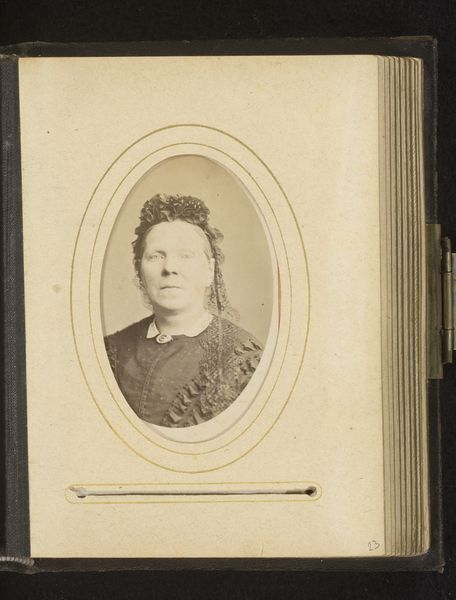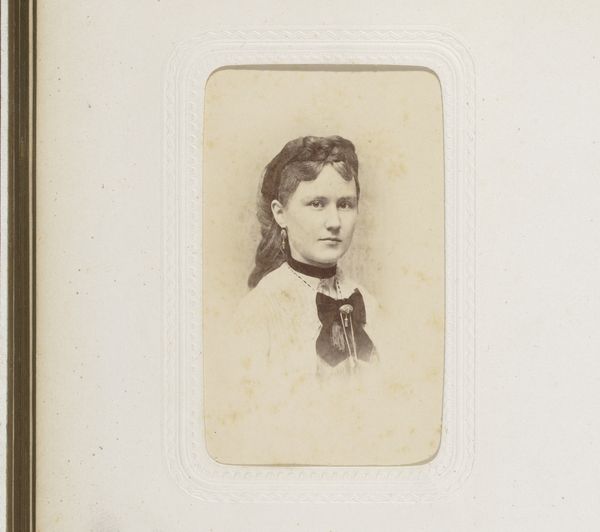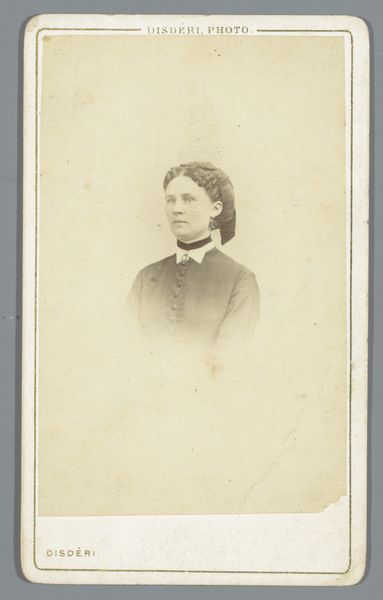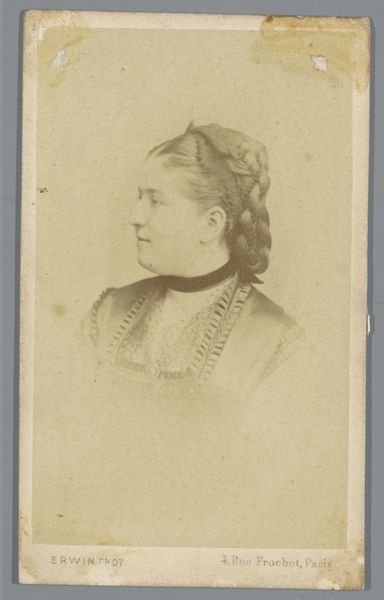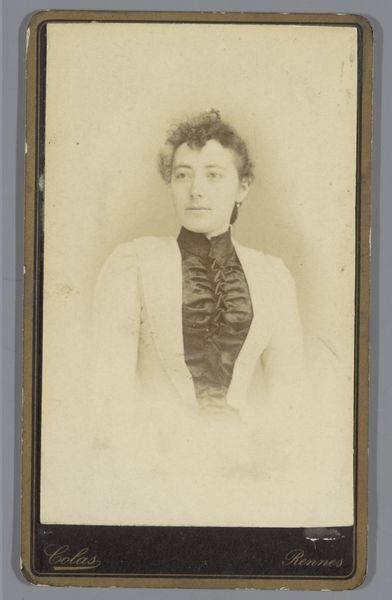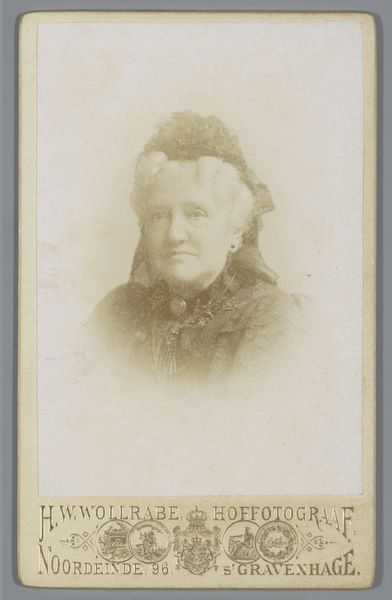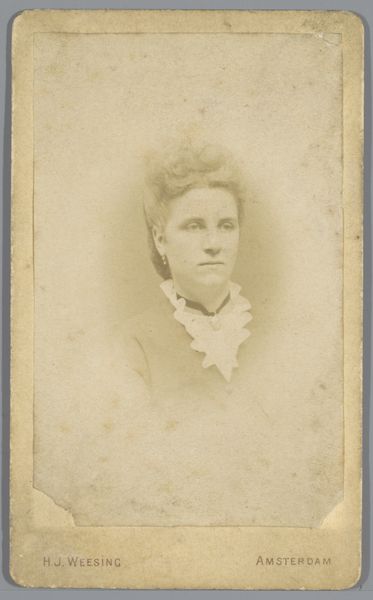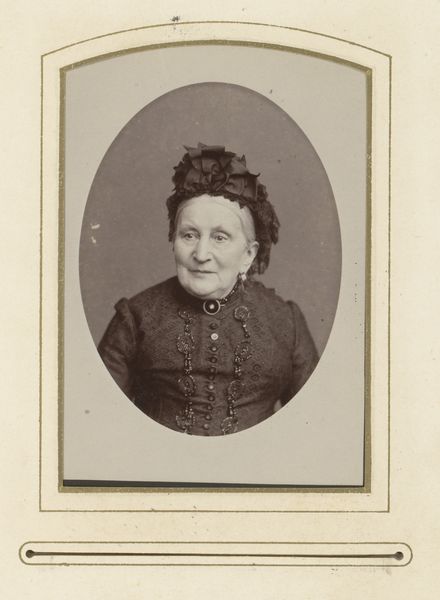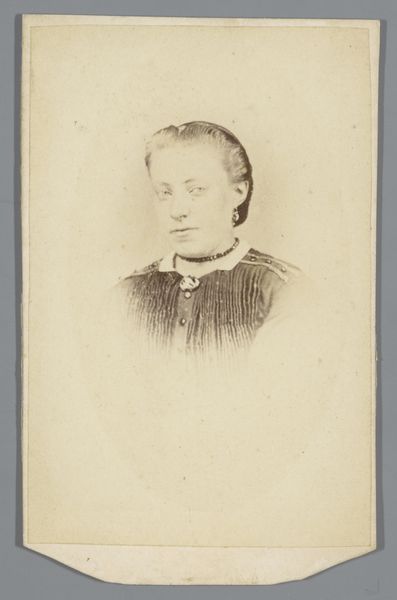
#
photo of handprinted image
#
aged paper
#
toned paper
#
homemade paper
#
pale palette
#
light coloured
#
white palette
#
watercolour illustration
#
paper medium
#
watercolor
Dimensions: height 105 mm, width 66 mm
Copyright: Rijks Museum: Open Domain
This photographic portrait was made by M. Boisdon in Paris, using a process that was then relatively new. Consider the materiality of this photograph. The thin paper support, the sepia tones achieved through chemical processing, and the sharp, almost clinical detail. These elements were radical departures from painting, the dominant mode of portraiture for centuries. Photography democratized image-making. Suddenly, it became possible for a middle-class person to have their likeness captured, and to participate in a culture of visual representation formerly reserved for the elite. Boisdon's studio, located at 19, Boul St. Denis, was likely a bustling place, employing various technicians and assistants. The labor involved in photography, from posing the subject to developing the print, speaks to the changing nature of work in the industrial era. By focusing on materials, making, and context, we gain a deeper appreciation for the social and cultural significance of this seemingly simple photograph. It's not just a portrait of an unknown woman; it's a window into a rapidly changing world.
Comments
No comments
Be the first to comment and join the conversation on the ultimate creative platform.
